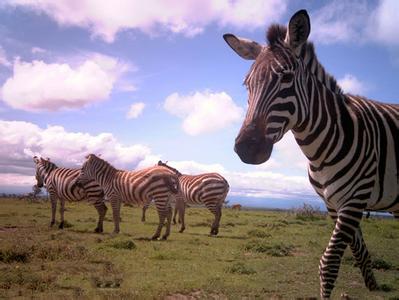(单词翻译:单击)
听力文本
This is Scientific American — 60-Second Science. I'm Steve Mirsky.
Got a minute?
"I have now worked in seven states across India, and we've looked at human-wildlife interactions, particularly human-wildlife conflict ranging from crop loss, livestock predation, human death, human injury and property damage."
Krithi Karanth, a Wildlife Conservation Society researcher also affiliated with India's Centre for Wildlife Studies and Duke University in the U.S.
"Fortunately most of the losses are crop losses and to a much lower extent livestock predation, property damage, human injury and human death occur...the policies and procedures for compensation varies hugely among states in India, but there is a compensation process in most states. What we also found is that less than 30 percent of affected people are filing. They're very frustrated with the bureaucracy…so in 2013 I thought of an idea, because I travel for hundreds of villages across India for my research projects. And we realized that everybody had access to cell phones—it was very simple for people to call in and report an incident. So with my collaborator Nikhil Velpanur, in 2013 we set up a web portal and a technology platform that integrates a toll-free number with the ability to address calls that came in."

"So the idea is very simple. Anybody experiencing a conflict incident calls in to the toll-free number and our field coordinator assigns our field agents to go and evaluate the problem. Once the evaluation is done we help them file the documentation...and so in 2015 we launched Project Wild Seve in Bandipore and Nagarahole National Parks. We covered over 300 villages by distributing 30,000 pamphlets. What we've been able to achieve I think has far exceeded my expectations and is pretty remarkable. In a year, we've helped over 3,400 cases files and recorded with the government. This has allowed almost 1,000 families who have already achieved compensation and another 2,400 well on their way to receiving compensation."
"I feel that Wild Seve is scalable and adaptable to any place or any country in the world where we see human-wildlife conflict. It's a simple system that works off a toll-free number which can be established anywhere...it is not the only solution to addressing human-wildlife conflicts, but it's certainly one tool we have in our toolbox, and certainly from an Indian perspective it's very much part of our policies."
Thanks for the minute for Scientific American — 60-Second Science Science. I'm Steve Mirsky.
参考译文
这里是科学美国人——60秒科学。我是史蒂夫·米尔斯基。
有一分钟时间吗?
“我在印度的七个州工作过,我们看到了人类与野生动物的相互作用,特别是人类与野生动物的冲突,这包括农作物损失、牲畜捕食、人类死亡、人身伤害还有财产损失等。”
克里蒂·卡伦斯是野生动物保护协会的研究员,他也在印度野生动物研究中心和美国杜克大学工作。
“幸运的是,大部分损失的是农作物,牲畜捕食、财产损失、人身伤害和死亡事件的程度非常低……印度各州在政策和补偿程序上存在很大的不同,不过大多数州都有补偿方法。我们还发现,提出申请的受影响民众人数少于30%。原因是他们对官僚作风很失望,所以在2013年我想到一个方法,因为我在印度的数百个村庄为研究项目做调研。所以我们意识到,每个人都有机会接触手机,对人们来说打电话报告事故非常简单。所以,我和尼克希尔·维尔帕纳在2013年合作建立了一个门户网站和一个技术平台,将能解决来电问题的免费号码集合在一起。”
“这个想法很简单。任何经历冲突事件的人给免费号码打电话,我们的现场协调员就会派我们的现场处理人员前去评估问题。做完评估以后我们就能帮助他们备案……2015年我们在班迪浦尔和纳加拉霍雷国家公园推出了“Project Wild Seve”项目。我们覆盖了300多座村庄,发放了30000本宣传册。我认为我们实现的成果远远超出了我的预期,非常出色。在一年中,我们帮助3400余个案例提出申请并在政府进行备案。这帮助近1000个家庭拿到了补偿,另有2400个家庭即将拿到补偿。”
“我认为Wild Seve项目具备扩展性,适用于世界上任何存在人类与野生动物冲突的国家和地区。这是一个简单的体系免费电话号码系统在任何地方都可以建立……这不是解决人类与野生动物冲突的唯一方法,但是这显然是我们所拥有的其中一个工具,当然从印度的角度来看,这也是我们政策中非常重要的一部分。”
谢谢大家收听科学美国人——60秒科学。我是史蒂夫·米尔斯基。
译文为可可英语翻译,未经授权请勿转载!


